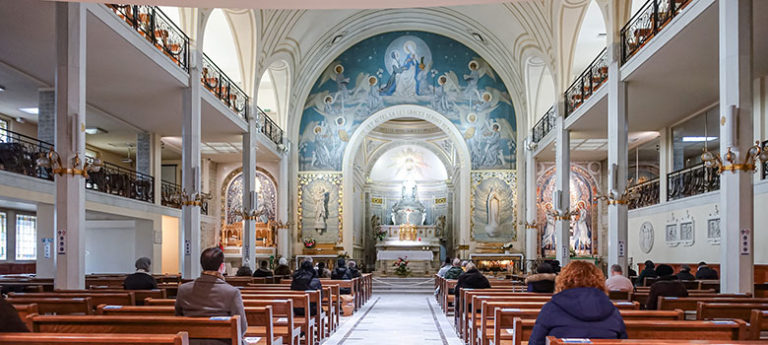Chapel Our Lady of the Miraculous Medal, Paris
© KarmaWeather by Konbi - All rights reserved
Cover photo by Paris la douce
The Chapel of Our Lady of the Miraculous Medal
In Paris, the Chapel of Our Lady of the Miraculous Medal has been for nearly two centuries a place of pilgrimage, prayer and meditation for those wishing to place themselves under the protection of Mary, in accordance with the Catholic faith.
The mysteries and miracles linked to the Marian apparitions as well as the promise of great graces conferred on the bearers of the aforementioned medal traditionally perceived as the origin of miraculous conversions and healings, have given it great fame. Long distributed in vending machines, now small items can be found in a shop where they are sold with a notice "the medal must be worn and distributed not as a lucky charm but with faith and love".
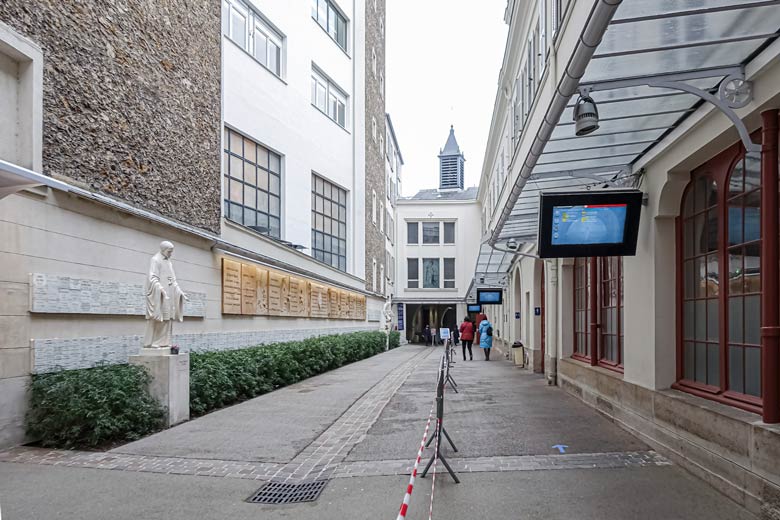
In 1830, the Blessed Virgin appeared to Catherine Labouré (1806-1876), a modest peasant from Burgundy, then a young novice of the order of the Daughters of Charity of Saint Vincent de Paul. From July to November 1830, in the heart of the chapel, in the square reserved for the sisters of the seminary, the Mother of Christ visited her five times. She instructed her in particular to strike a medal engraved with the invocation "O Mary, conceived without sin, pray for us who have recourse to you. "Catherine entrusts this experience only to her confessor and to the Mother Superior. She took the habit and pronounced her vows on January 30, 1831. She joined the Enghien hospice, in the village of Reuilly in the south-east of Paris on February 5, 1831, where she remained until the end of her life in the anonymity of her vocation. Throughout her existence, Catherine, with a discretion bordering on silence, multiplies visions and premonitions.
A cosmopolitan crowd, two million pilgrims flock each year to the places of the apparition of the Virgin Mary. In the chapel, believers make devotion in front of the relics of Saint Catherine Labouré, beatified in 1933 and then canonized in 1947 by Pius XII. Some attribute miracles to her remains, especially the day after her death in 1876, when a disabled child is said to have regained use of his legs.
Objects of piety, in the choir is also the tomb of Saint Louise de Marillac (1591-1660) founder, first mother superior of the order of the Daughters of Charity, beatified in 1920, canonized in 1934, and the heart of Saint Vincent de Paul (1581-1660) canonized in 1737, the chair where the Virgin would have sat during her appearance to Catherine.
The Daughters of Charity, an order instituted in 1633 by Saint Vincent de Paul and whose formation of the congregation is entrusted to Saint Louis de Marillac, dedicate their works to the service of the sick, to the bodily and spiritual service of the poor. The first female congregation to escape the rule of the fence, they roam the streets to help the unfortunate, work as nurses in hospitals and hospices.
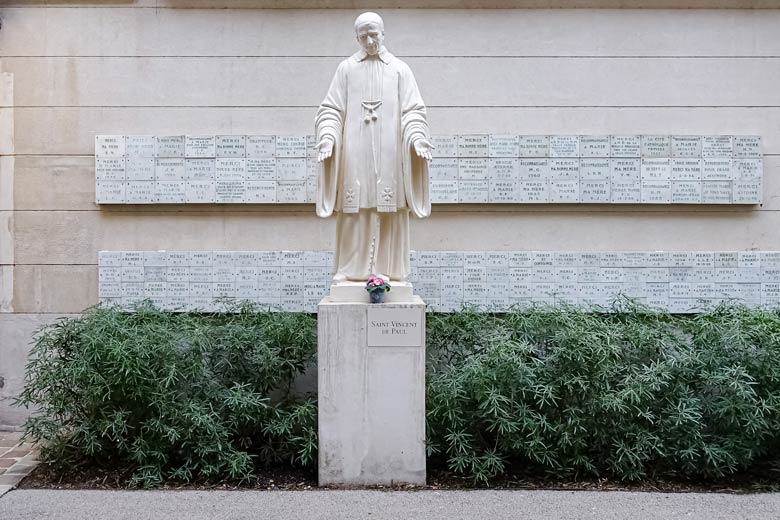
At 140 rue du Bac in Paris, the former Hôtel de Lassay dating from 1681, enlarged in 1766 by the Duke de la Vallière to accommodate his library of 50,000 precious works, which became the Hôtel de Châtillon, was devolved by imperial decree to the Sisters of Charity. Transformed, fitted out in 1812 by the architect Louis-Emmanuel Damesme, it becomes the first convent of the Daughters of Charity of Saint Vincent de Paul. Sanctified in 1815, the chapel is placed under the name of the Sacred Heart of Jesus, while Marian worship takes shape there following the apparitions of the Virgin to Catherine Labouré in 1830.
Nowadays, behind the austere porte-cochère, pilgrims march through an alley bordered by convent buildings. The decorative elements comment on the history of the place. The sculptures of Saint Vincent de Paul and Saint Louise de Marillac stand alongside those of the first Marian apparition to Catherine Labouré. Bas-reliefs and panels illustrate in images the journey of Saint Vincent de Paul and the creation of the Daughters of Charity as well as the account of the apparitions of the Virgin to Catherine Labouré.
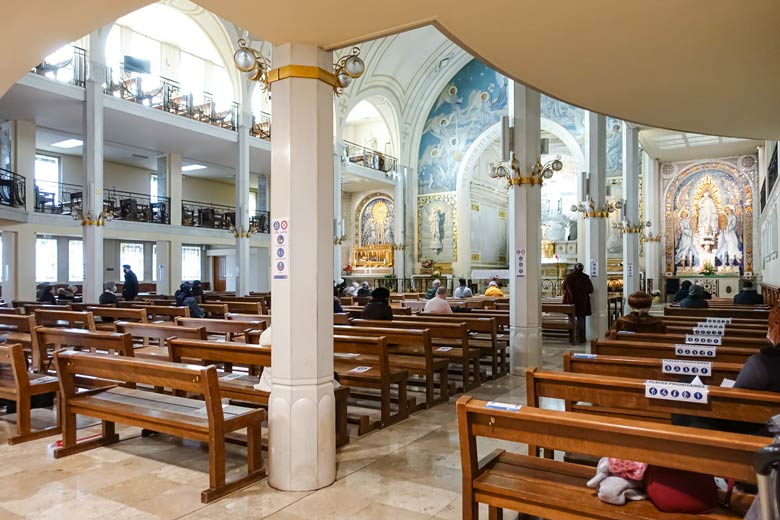
The chapel, very busy, welcomes all those who come to pray to the Virgin Mary. The original building from 1815, with a nave covered with a low barrel vault, is intended only for the religious of the congregation. Following the Marian apparitions to Catherine Labouré in 1830, the archdiocese examined for two years the request to have a medal dedicated to Marian worship struck. In 1832, during the cholera epidemic in Paris, many medals were distributed. Pledges of protection, hopes of recovery, they quickly achieve success. The Chapel of Our Lady of the Miraculous Medal is gradually opened to the public, before becoming an important place of pilgrimage as the echo of miracles resonates around the world.
Between 1843 and 1845, it was enlarged for the first time, with side aisles and an apse. Above the altar, at the end of the apse, a white rock is surmounted by a "Virgin of the rays" in 1856. At the entrance to the choir on the right, a shrine presents the body of Saint Catherine Labouré while that on the left is the tomb of Saint Louise de Marillac placed here since 1920, two realistic recumbent figures, able to strike the imagination of visitors. In 1930, the nave was raised to accommodate two galleries. The lighter supports make it possible to accommodate more pilgrims. A triumphal arch decorated with a fresco pays homage to the apparition of the Mother of Jesus to Catherine Labouré.
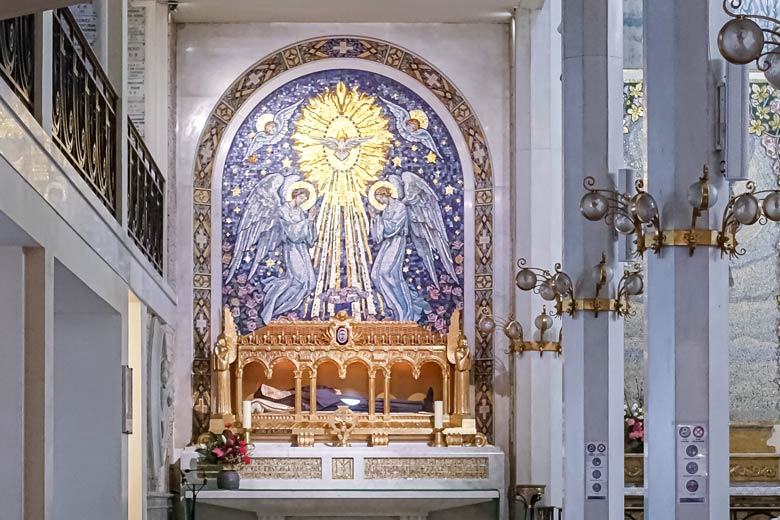
Plan your visit to the Chapel of Our Lady of the Miraculous Medal
Chapelle Notre-Dame de la Médaille Miraculeuse
Address: 140 rue du Bac - Paris 7Phone: +33 (0)1 49 54 78 88
Fax: +33 (0)1 49 54 78 89
Subway (Métro): Sèvres-Babylone (lines 10 and 12)
Bus: 39, 63, 70, 84, 87, 94
Practical information and timetables: website
